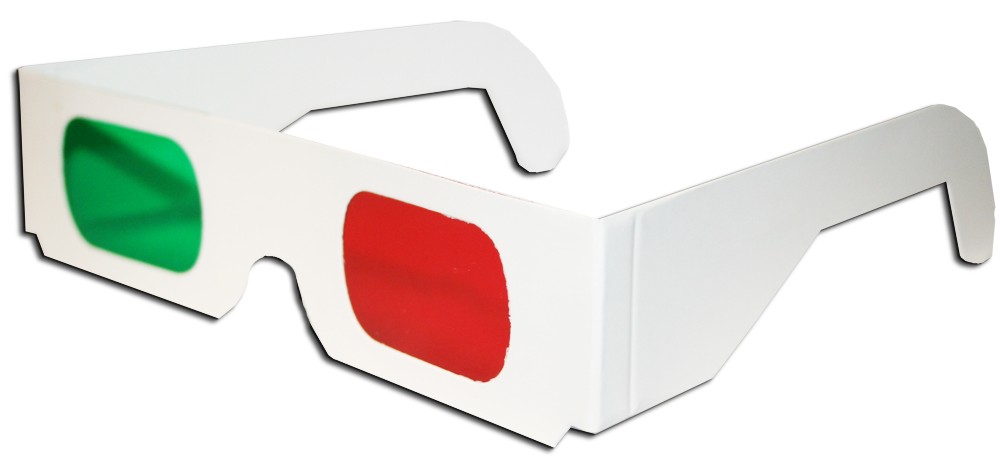I don’t know who ever thought 3D movies were a good thing. The history of 3D movies can be summarized as such: “It didn’t work before, so let’s try it again!”
Way back when…
Back in the 1950s, television was taking over the world. Movies had been the unquestioned leader in entertainment for about 40 years, but studios began to panic when people could suddenly watch TV in their homes. Why would you pay to go to a movie when you could get live entertainment in your house? Studios needed to innovate. They introduced widescreen movies, added color to more films, and it still wasn’t enough. New ideas were needed and they came fast and furious.
Some of these ideas were just plain silly. Movies added smells that were pumped into the theater at different times. Drive-in theaters capitalized on Americans’ love of cars. And then, there was 3D.

Remember, this was a very different time. The only way to see 3D was to use paper glasses like the ones you see above. By projecting one image in red and the other in green, you got something like a 3D effect. 3D movies in the 1950s weren’t very good, and the trend disappeared.
The 1980s called…
For some reason that I do not understand, 3D had a brief renaissance in the 1980s. Maybe it was the rise of VCRs which meant people could watch more movies in their homes. For whatever reason, there were some people who said to themselves, “3D movies didn’t work before, so let’s try them again!”
The key, they thought, was that 3D movies could be shown in color. Using glasses with special polarized lenses, 3D movies could show full color. Unfortunately, studios didn’t count on two things. First of all, the movies still stunk. Jaws 3-D was without a doubt the worst example of the genre. Perhaps more important, when you used 3D glasses, the image was a lot dimmer than it was without the glasses. Theater owners didn’t have the technology to make the images brighter, and the overall experience was really pretty bad.
The 2010s: 3D TV
Another 30 years passed, and it seems that people forgot how bad 3D was. TV makers had made tons of money in the 2000s, and they needed a way to get customers keep buying. Solid Signal’s Mike C told us all about it at the time:
Remember that 13 years ago, YouTube didn’t let you have videos longer than 10 minutes, that’s why it’s broken up into parts.
Once again, a whole new generation learned how bad 3D was. Not only was it dim, but the glasses needed to work with TVs caused headaches, and they were expensive. 3D TV went away as fast as it came.
Somehow 3D movies still kinda held on
While TV was going 3D, movies were doubling down. New projection technology meant that the image could be brighter, but it still didn’t mean that 3D movies were any better. 2010’s Avatar was said to be the best example of the genre, because it was almost completely CGI. That way, the 3D experience could be controlled a lot better. Still, 3D movies sort of petered out, and most of us went years between seeing 3D movies. When Avatar 2 came out, the push was on to bring back 3D. The film made a lot of money and is still making money, but I’d argue that it’s in spite of 3D, not due to it.
I’m not the only one who feels that way. YouTuber NerdWriter1 has the same opinion. Take a look at what they have to say:
Here’s why 3D will always stink
3D will never work until it’s more like VR. Until you can look around you, really look around in practically any direction, 3D will never take off. VR headsets will give you a better experience, but they’re heavy and expensive. Putting 300 VR headsets in a movie theater just isn’t going to happen. For that reason, 3D movies will always stink.
And you know, I’m ok with that. Someday, someone will create content that really takes advantage of 3D, but that time hasn’t come yet. 3D will be nothing but a poorly-implemented gimmick until that point.



